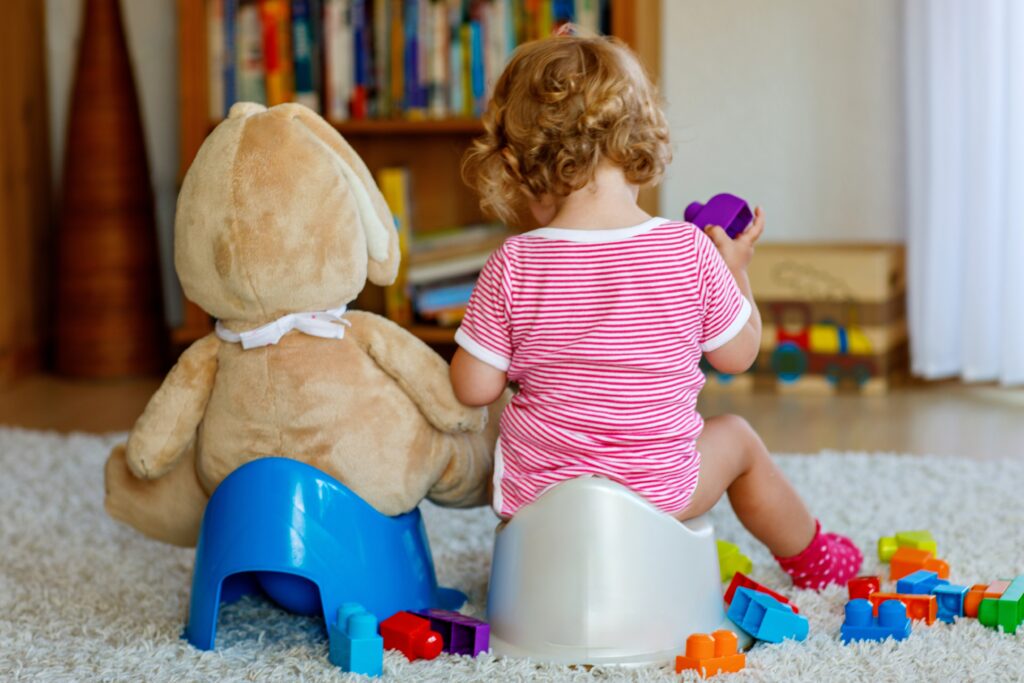As parents, you know your child best. And when it comes to reaching big milestones, one of the most talked-about (and sometimes puzzling) is potty training. So, how do you know if your child is ready? Is there a perfect potty training age?
The answer isn’t one-size-fits-all but there are reliable signs to look for and simple ways to support your child’s development through this exciting stage of independence!
Let’s walk through what readiness looks like, why it matters in the early years, and how you can help your child feel confident and proud.
Why Readiness Matters
Toilet training is a major step in early childhood and one of the first self-care milestones on the path to independence. It’s not just about using the potty; it’s also about awareness, communication, routine, and confidence.
The concept of potty training age isn’t tied to a number alone. Instead, it’s tied to readiness signs, physical, emotional, and developmental markers that let us know a child is beginning to make important mind-body connections.
When children begin to show signs that they’re ready, potty training tends to go more smoothly. They feel successful, in control, and less frustrated.
That’s why at I’m Just a Kid, we always focus on readiness, not pressure.
Potty Training Age: What to Look For
The typical potty training age range is between 18 months and 3 years old, but that’s just a guideline. Some children show signs earlier, while others need more time. It’s completely normal.
Here are some signs your child may be approaching or is already at potty training age:
Physical Signs
- Stays dry for longer stretches of time (two hours or more)
- Wakes up dry from naps
- Has regular, predictable bowel movements
- Can pull pants up and down (or is learning to)
These signs indicate that your child’s body is beginning to develop the bladder and bowel control needed for successful toilet use.
Cognitive and Verbal Signs
- Can follow simple directions
- Communicates (verbally or nonverbally) about needing to go
- Understands words related to toileting like “wet,” “dry,” “pee,” or “poop”
- Shows curiosity when others use the bathroom
This is where child development really shines: potty training involves recognizing body signals, making choices, and remembering steps.
Behavioral and Emotional Signs
- Shows interest in the potty or toilet
- Tells you they want to be changed when wet or soiled
- Wants to be more independent
- Is not experiencing big transitions or stress (like moving, starting a new school, or welcoming a new sibling)
Emotional readiness helps children approach potty learning with curiosity and confidence not frustration.
How to Support Potty Readiness
If your child is showing signs of reaching potty training age, there are several ways to gently support their growth without pressure:
1. Talk About It
Use simple, positive language. Read books about using the potty, talk about what happens during diaper changes, and help your child name their body’s signals.
Make it part of your daily routine so it feels familiar, not forced.
2. Introduce the Potty Early
Even before training begins, you can invite your child to sit on the potty (with clothes on at first!). Let them see you use the bathroom, and talk through the steps. This builds comfort and removes mystery.
Choose a child-sized potty or a seat insert whatever works best for your family and your space.
3. Encourage Independence
Build skills that support potty training by encouraging your child to dress themselves, wash their hands, and follow simple routines. These little wins boost their confidence and make potty learning easier later on!
4. Be Consistent (But Flexible)
Once your child begins using the potty, try to keep a regular routine like offering potty time after meals, before naps, and before bedtime.
And remember: every child’s journey is different. Progress may come in waves. Celebrate small steps and stay patient!
Let’s Celebrate Milestones Together at I’m Just a Kid
At I’m Just a Kid, we understand that potty learning is a big part of child development and it’s different for every child. That’s why we partner with families to support readiness with understanding, flexibility, and care.
Our early childhood education classrooms include developmentally appropriate potty routines, gentle guidance, and lots of encouragement. We respect each child’s pace and help them feel proud of their progress.
We work closely with families to align potty routines at home and school, making the process smoother and more successful for everyone.Ready to learn how I’m Just a Kid supports potty learning and other key moments in child development? Visit us and explore how our nurturing, play-based approach helps children grow with confidence and joy.
